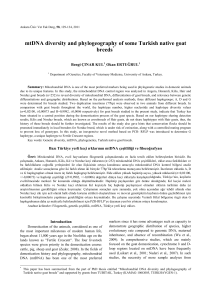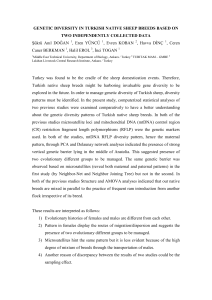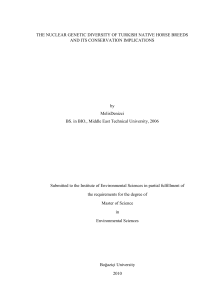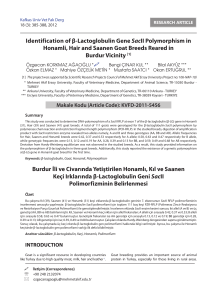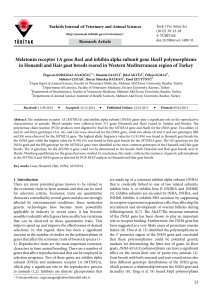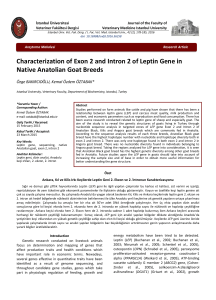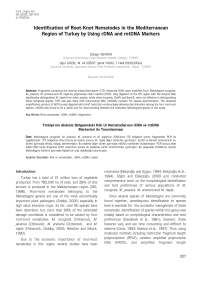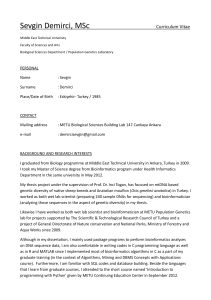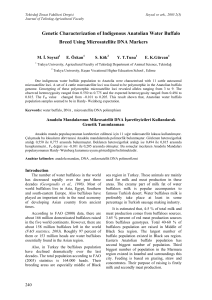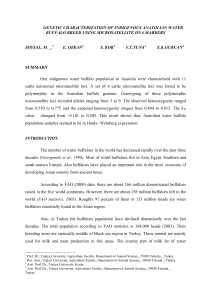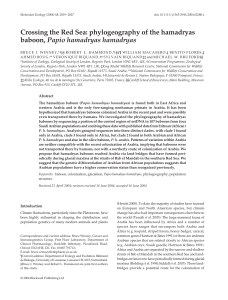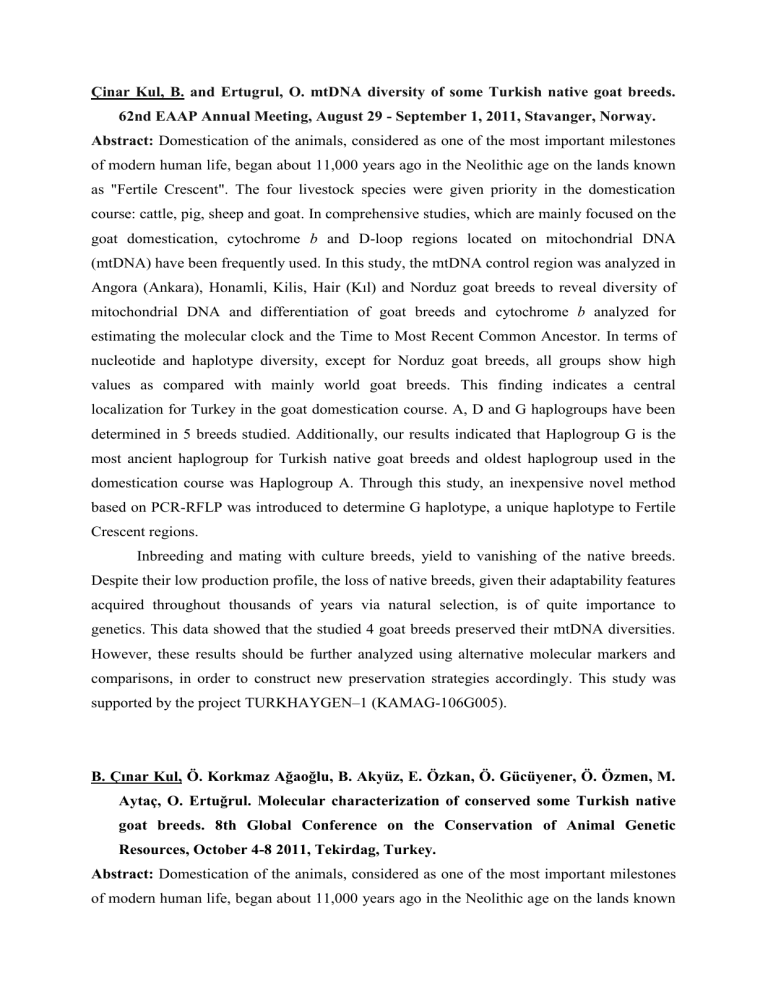
Çinar Kul, B. and Ertugrul, O. mtDNA diversity of some Turkish native goat breeds.
62nd EAAP Annual Meeting, August 29 - September 1, 2011, Stavanger, Norway.
Abstract: Domestication of the animals, considered as one of the most important milestones
of modern human life, began about 11,000 years ago in the Neolithic age on the lands known
as "Fertile Crescent". The four livestock species were given priority in the domestication
course: cattle, pig, sheep and goat. In comprehensive studies, which are mainly focused on the
goat domestication, cytochrome b and D-loop regions located on mitochondrial DNA
(mtDNA) have been frequently used. In this study, the mtDNA control region was analyzed in
Angora (Ankara), Honamli, Kilis, Hair (Kıl) and Norduz goat breeds to reveal diversity of
mitochondrial DNA and differentiation of goat breeds and cytochrome b analyzed for
estimating the molecular clock and the Time to Most Recent Common Ancestor. In terms of
nucleotide and haplotype diversity, except for Norduz goat breeds, all groups show high
values as compared with mainly world goat breeds. This finding indicates a central
localization for Turkey in the goat domestication course. A, D and G haplogroups have been
determined in 5 breeds studied. Additionally, our results indicated that Haplogroup G is the
most ancient haplogroup for Turkish native goat breeds and oldest haplogroup used in the
domestication course was Haplogroup A. Through this study, an inexpensive novel method
based on PCR-RFLP was introduced to determine G haplotype, a unique haplotype to Fertile
Crescent regions.
Inbreeding and mating with culture breeds, yield to vanishing of the native breeds.
Despite their low production profile, the loss of native breeds, given their adaptability features
acquired throughout thousands of years via natural selection, is of quite importance to
genetics. This data showed that the studied 4 goat breeds preserved their mtDNA diversities.
However, these results should be further analyzed using alternative molecular markers and
comparisons, in order to construct new preservation strategies accordingly. This study was
supported by the project TURKHAYGEN–1 (KAMAG-106G005).
B. Çınar Kul, Ö. Korkmaz Ağaoğlu, B. Akyüz, E. Özkan, Ö. Gücüyener, Ö. Özmen, M.
Aytaç, O. Ertuğrul. Molecular characterization of conserved some Turkish native
goat breeds. 8th Global Conference on the Conservation of Animal Genetic
Resources, October 4-8 2011, Tekirdag, Turkey.
Abstract: Domestication of the animals, considered as one of the most important milestones
of modern human life, began about 11,000 years ago in the Neolithic age on the lands known
as "Fertile Crescent". In studies related with domestication, mitochondrial DNA (mtDNA)
regions and microsatellite loci have been frequently used. In the present study, the mtDNA
control region and 20 microsatellite loci were analyzed in preserving individuals from Angora
(Ankara), Honamli, Kilis, Hair (Kıl) and Norduz goat breeds to reveal genetic diversity and
differentiation of goat breeds.
In terms of nucleotide and haplotype diversity, all groups show high values as compared
with mainly world goat breeds. A, D and G haplogroups have been determined in 5 breeds
studied. Through this study, an inexpensive novel method based on PCR-RFLP was
introduced to determine G haplotype, a unique haplotype to Fertile Crescent regions. As a
result of 20 microsatellite loci analyses, average numbers of alleles in per locus and
heterozygosity levels were fairly high. In terms of FIS values, all of the populations were in the
Hardy-Weinberg equilibrium because they were defined close to zero. According to FCA,
goat breeds except Angora cannot be genetically separated from each other. The chosen
markers for this study were determined to be highly polymorphic in Turkish native goat
breeds. These findings indicate a central localization for Turkey in the goat domestication
course. Inbreeding and mating with culture breeds, yield to vanishing of the native breeds.
Despite their low production profile, the loss of native breeds is of quite importance to
genetics. This data showed that the studied 5 goat breeds preserved their molecular diversities.
However, these results should be further analyzed using alternative molecular markers (such
as Y chromosomal markers) and comparisons, in order to construct new preservation
strategies accordingly. This study was supported by the project TURKHAYGEN–1
(KAMAG-106G005).

